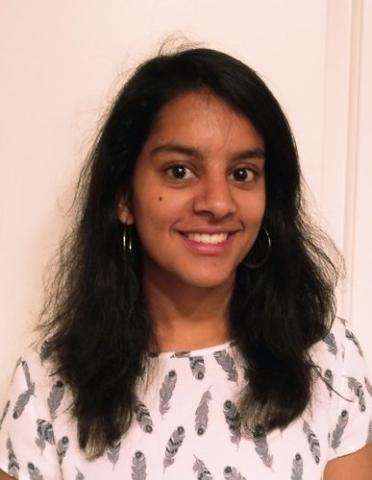ECE Ph.D. student Shruti Lall was chosen for the Best Poster Award at the 11th ACM Wireless of the Students, by the Students, and for the Students (ACM S3) Workshop, held October 21, 2019 at Los Cabos, Mexico.
Shruti Lall was chosen for the Best Poster Award at the 11th ACM Wireless of the Students, by the Students, and for the Students (ACM S3) Workshop, held October 21, 2019 at Los Cabos, Mexico. Lall is a Ph.D. student in the Georgia Tech School of Electrical and Computer Engineering.
She and her coauthors on the poster are all affiliated with the Georgia Tech Networks and Mobile Computing Research Group (GNAN). Her coauthors are Raghupathy Sivakumar, her Ph.D. advisor, GNAN director, and the Wayne J. Holman Chair in ECE, and Uma Parthavi Moravapalle, a spring 2019 ECE Ph.D. graduate who is now working at Google in Sunnyvale, California. The title of the award-winning poster is “While You Were Sleeping: Time-Shifted Prefetching of YouTube Videos to Reduce Peak-time Cellular Data Usage.”
Wireless spectrum is expensive. The Federal Communication Commision’s most recent auction netted $45 billion for 65 MHz of spectrum. At the same time, the number of wireless users and the load that they impose on cellular networks has been rapidly growing. Wireless service providers are under tremendous pressure to either buy more spectrum or devise strategies to increase utilization of existing spectrum.
In this work, Lall and her coauthors explore an interesting phenomenon–usage of cellular networks during peak-usage hours (7 am-12 midnight) is approximately 5x the usage during off-peak hours (12 midnight-7 am). This leaves precious spectrum severely underutilized during the off-peak periods.
Lall and her coauthors consider the following question: Is it possible to predict what content a user would consume during the next peak period and prefetch that content during the off-peak periods? They answer this question specifically in the context of the single most dominant application as determined by bandwidth usage–YouTube. Using a dataset of over 1.8 million videos collected from 206 users over a period of one year, they show that it is possible to prefetch videos that a user is likely to watch during the next peak-usage period, and thus reduce peak-usage load on an average by 36 percent.
